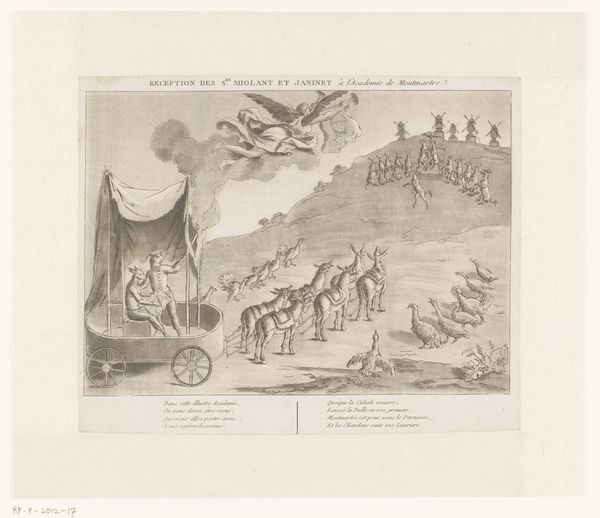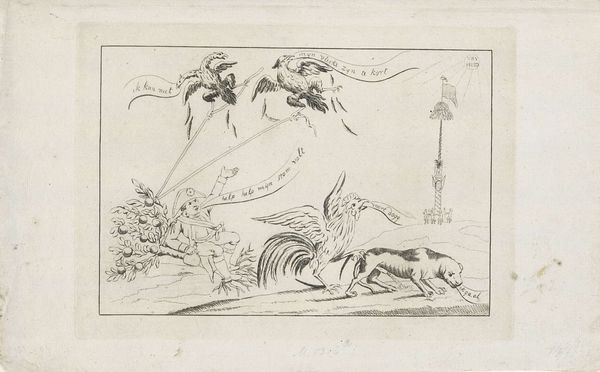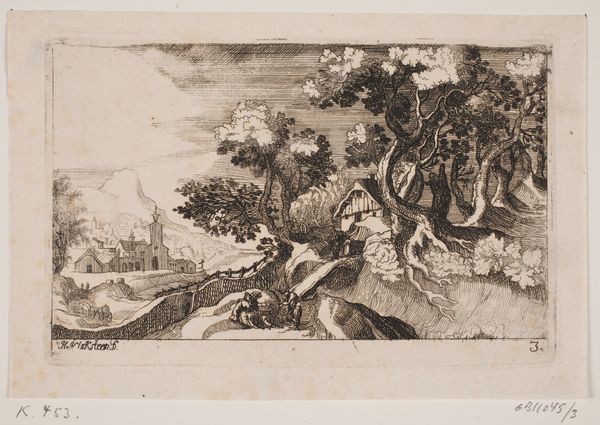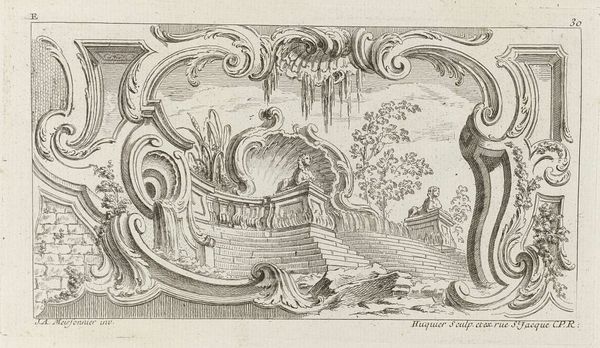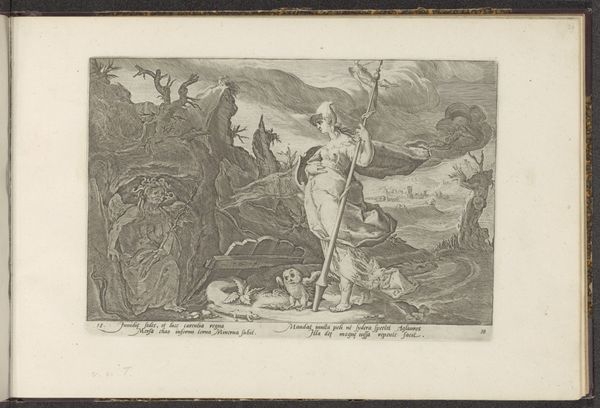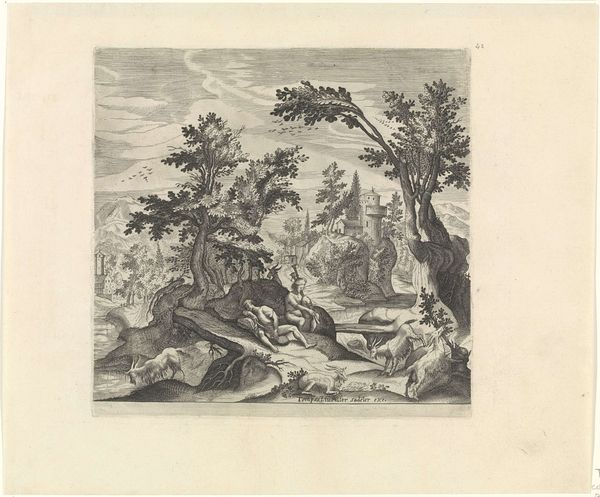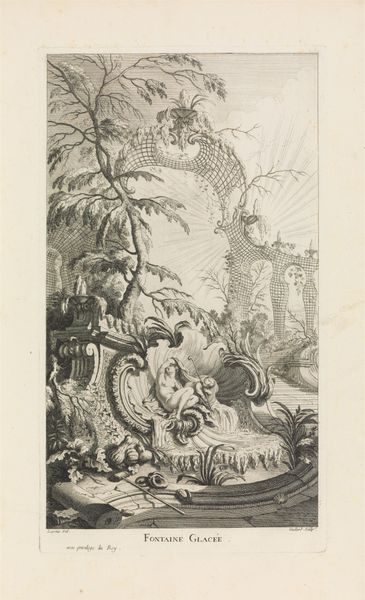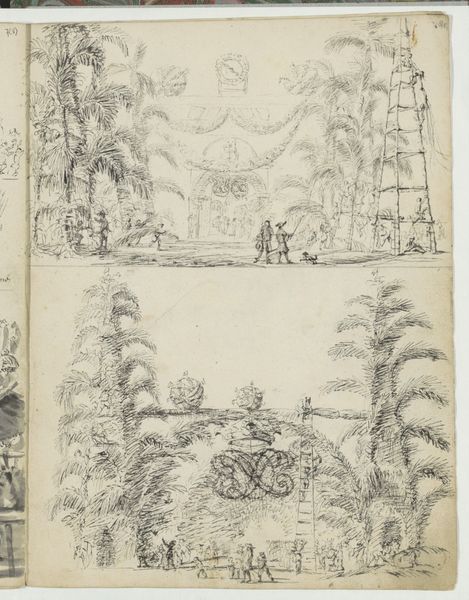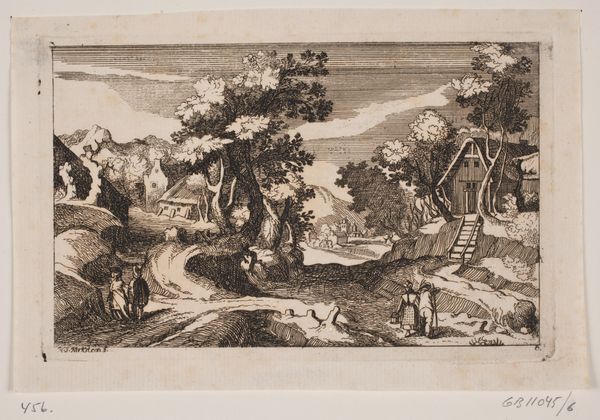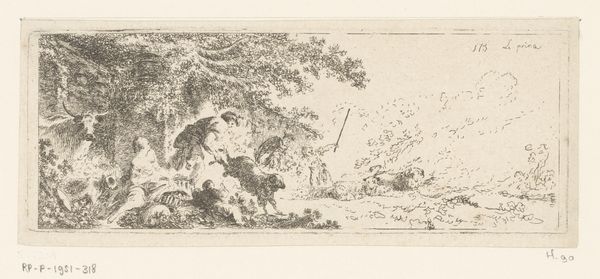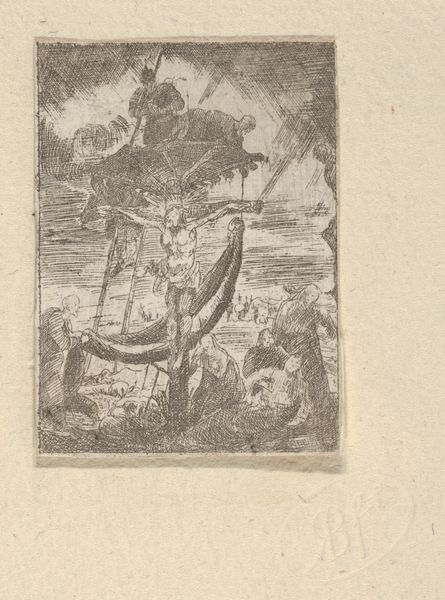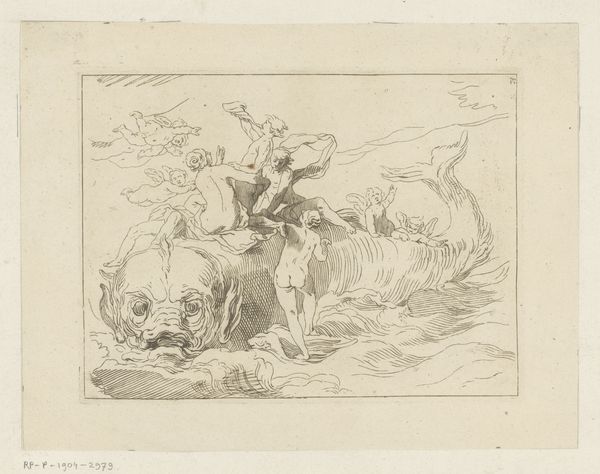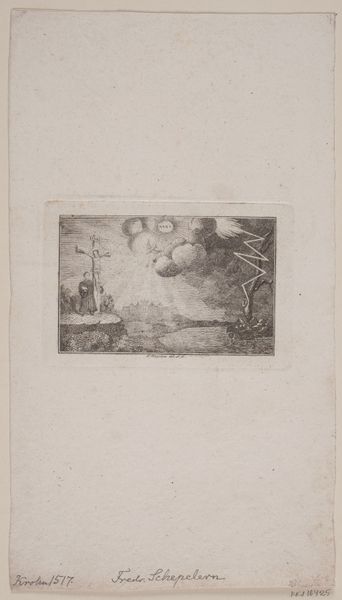
graphic-art, print, etching
#
graphic-art
#
narrative-art
# print
#
etching
#
history-painting
Dimensions: height 181 mm, width 251 mm
Copyright: Rijks Museum: Open Domain
Curator: Here we have a striking print titled "Oranjeboom omver getrokken, 1795," created by an anonymous artist in 1795, currently held in the collection of the Rijksmuseum. It's an etching, falling within the categories of both graphic and narrative art. Editor: It hits you immediately with this odd, almost cartoonish style. The tree—the Oranjeboom, I presume—is literally being pulled over, but everyone seems rather... composed, don’t you think? There’s a strange calm about the destruction. Curator: That composure is deceptive, reflecting the calculated nature of revolutionary fervor during this period. The toppling of the Orange tree—symbolizing the House of Orange-Nassau—represents the Batavian Revolution's rejection of the Stadtholder and the old order. The surrounding imagery conveys the complexities of the moment. Editor: Right, there's almost too much going on. I see winged figures and what looks like lightning, and a dog seemingly indifferent to the arboreal drama unfolding. There are messages in the scrolls which are almost more like subtitles than parts of a meaningful art piece... a bit chaotic in ways? Curator: Precisely! The chaos mirrors the political upheaval of the time. The print's symbols were intended to be deciphered by the public, turning the viewer into an active participant in understanding the events. It’s carefully composed visual propaganda, even if the style looks rudimentary to us now. Editor: Visual propaganda, huh? Maybe that explains why the poor dog doesn't seem too fazed. Just going about its day, oblivious to the "revolution." Though really, looking at this after so long makes it hard to take it all as seriously as they perhaps wanted me to. What's next? Overthrowing foliage with pitchforks? Curator: I see your point. It’s easy to detach from the emotional charge across two centuries, but in its moment, this print served a clear political purpose. To demonize and reject what was a longstanding rule in the region. It reflects a dramatic shift in political thought. Editor: Still, I can’t help but feel it's slightly... comedic? Perhaps that's just a reflection of how narratives tend to mellow and evolve. Curator: That's a thought-provoking interpretation, highlighting the impact of time on our perception of historical art. Editor: Agreed! Thank you for setting the stage here and untangling a few branches to guide me through it.
Comments
No comments
Be the first to comment and join the conversation on the ultimate creative platform.
